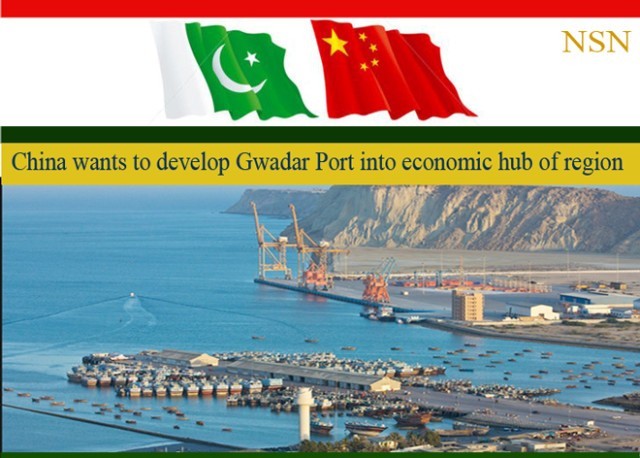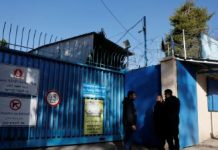Recently President ArifAlvi when talking about Balochistan said that the government was”seriously focusing” on the social and economic uplift of the province. He highlighted the”enormous opportunities” that would be brought to Balochistan because of CPEC.

Haider Ali Nawaz is currently a student at Lahore University of Management Science pursuing his BSc (Hons) in Political Science.
8th September 1958, the coastal land of Gwadar was handed over to the Pakistani government, by the Omani royalty, and like the rest of Balochistan the area was mostly neglected by the government. To see the reality of this one does not need to look any further than the provincial budget of 2015, prior to the Chinese investment.Hence, thecoastal town of Gwadarwent unnoticed and untouched for over 57 years up until the, China, opened the eyes of the government to its business and geo-political potential.
Gwadar is a naturally formed harbor which only requires a bare minimum of investment to be made on the port for operational purposes. Situated along the southwestern end of the Pakistani coastal belt is 15,216 square kilometers of a deep-water port with year around ability to function at full capacity and further divided into two bays, eastern and western. This division is made by the natural mountain formationwhich has been labelled as the Hammerhead.
In 2015, the CPEC’s inception took place whichallocated $46 billion for the development of the overall China-Pakistan Economic Corridor. Hence began the development of the second planned city of Pakistan in 74 years of its independence and that too at the behest of a foreign government.
This influx of foreign investment into the most underutilized province of Pakistan does haveapositive influence in terms of uplifting the social and economic fabric. However, the question remains how much share does Pakistan government has in this progress? Or it is China how is doing all the work.
As per the agreement which has been signed the Pakistani government has leased out 2,200 acres of coastal area to the Chinese government for the next 40 years, established the first Free Zone of the state and set up a combined civil and military Special Security Division of 15,000 personnel with the objective to safeguard the foreign investment. Although this sets up the state of Pakistan well on its way to realize its true economic potential and place in the regional and global economic landscape, the future thinking should be complimented by the lessons of the past.
There has been instances where Pakistan allowed foreign presence which most of the time didn’t turn out to be as much beneficial for Pakistan. Here, it is important to understand that the previous presence was of military purposes, however in case of Pakistan-China it is sheerly economic. Henceforth, the outcomes could turn out to be more beneficial for Pakistan if things went smoothly.
However, most of the skeptics has genuine concern regarding this collaboration pointing out the question:Is Pakistan genuinely gaining the best possible outcome of the promises made by a foreign government or is it just the same deal camouflaged as an economic presence rather than military? If one thinks pragmatically it is important to understand that any of bi-lateral agreement would be of any benefit unless Government of Pakistan knows how to turn tide in the favor for Pakistan. Whenever an agreement is taking place between two sovereign states each has to score maximum for itself. That is how international interactions work either military or economic.
In attempts to curtail the on-going security concerns of Gwadar the government fenced up the most economically active parts of the city. However, instead of providing the locals permits to operate within these premises it further sidelined the local fishery businesses, whose cooperation was key to setting up the initial infrastructure of the port.
Moreover, in terms of uplifting the social fabric,progress is there but what was promised is being delivered remains a question for many. The labor that is being used includes local however, upper tier of construction sites is purely Chinese. It might be due to the lack of technical training of the local population. Hence not only are the locals pressed for jobs presently but as time goes on without the presence of proactive steps taken to impart these skillsets the situation will only get worse. Another key issue that is being faced is the language barrier of the locals with the foreigners. Without the ability to communicate, any sort of collaboration between the two nationalities in the future will only remain a fool’s paradise.
The point that the government should remember is that this socio-economic project is not an accommodation of a foreign state on Pakistani soil but rather a collaboration. Rather than using this initiative as a means of political point scoring when the elections roll in, the political strata of Pakistan should ensure that the state is treated as an equal partner at the table rather than that of a licensed contractor. A reevaluation of both long- and short-term strategiesshould be carefully considered to ensure that Pakistan is also pursuing its own national interests rather than only acting as a bridge between China and the Indian Ocean.

















